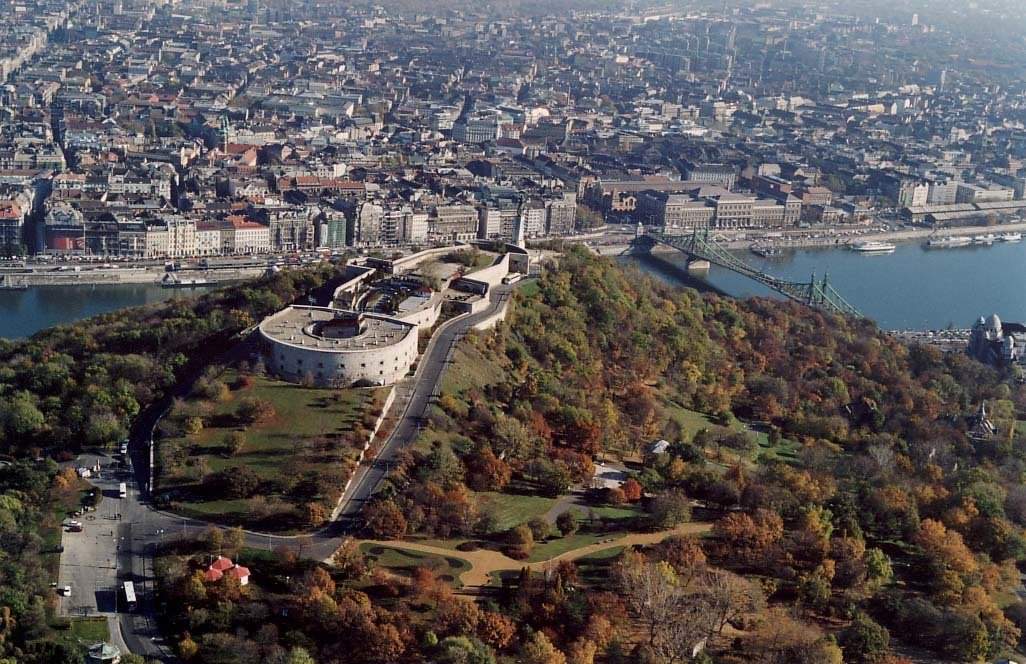Secrets of Budapest: Citadel, the symbol of the 1848-49 revolution’s defeat

On March 15th we commemorated the heroic acts of enthusiastic, patriotic young adults, brave soldiers and wise politicians. However, funzine.hu writes that we don’t really talk about the reasons behind the defeat suffered in the war for independence. This article tells about the building known by all Budapest dwellers, which was built after the defeat, and symbolised the power of the unbeatable Austrian Emperor. This is the story of the Citadel.
The Citadel towering on top of Gellért Mountain is frequently visited by tourists, who want to go for a walk and admire the beautiful panorama of the city. Meanwhile, only a few people know that the monument was ordered by Julius Jacob von Haynau, the “Hyena of Brescia” in 1854, after the defeat of the 1848-49 revolution, with the aim of keeping an eye out for the rebellious rascals of Pest-Buda, so that they wouldn’t rebel against the Habsburg ruler again.

Litography by Johann Rauh
Haynau was the Austrian general who defeated the Hungarian war of independence and was entrusted by Austrian Emperor Franz Joseph to restore the order in the country and Pest-Buda. Haynau flung himself into the task with great “enthusiasm”. He was the one who ordered the execution of the 13 Martyrs of Arad and Lajos Batthyány, imprisoned hundreds of Hungarian soldiers who fought for independence and incorporated the other significant part of the Hungarian army into the Austrian army. He also made sure that his memory would be guarded by the capital city by building the Citadel.
The symbol of failure
Even though in most cases fortresses were built at the highest point to protect the city, Haynau had completely different plans with the Citadel: he wanted to keep a constant eye on the population of Pest. The red-handed general even designed gun-sites on the fortress in case they needed to fire at the dwellers of the city – fortunately, this never happened.

Around 1872
Originally, the Habsburgs wanted to create a much bigger, 220 meter long, 60 metre deep fortress, but in the end, the construction started in 1850 only reached a length of 20 metres and a depth of 12-16 metres by 1854, when they finished the works. (They decided to build another “fortress” in Komárom, instead.)

Around 1953
Even though in 1867, at the time of the conciliation, the relationship between Austria and Hungary settled peacefully and the Citadel lost its military functions, the last Austrian soldiers only left in 1899.
Hungarians also knew how to fillip
A few decades later, Hungarians got the chance to take revenge for the Citadel. According to certain rumours, at the end of the 19th century the Parliament was built on the Pest side of the Danube almost right across the Castle of Buda, so that that the first thing that the king (in other words, Franz Joseph, who actually governed from Vienna, not Budapest) stepping out of the castle saw was the symbol of the constitutional system, which would remind him that he could only govern the country in accordance with the will of the nation.

The twist of fate
Even though city dwellers hated the Citadel, it grew into the symbol of the Austrian emperor’s suppressive, absolutist system. Its creator, Haynau also played a key role in the story of another construction of historic importance. The first stone bridge built at the initiation of Széchényi, the Chain Bridge, was inaugurated by Haynau in the November of 1849.
Another absurd story is that Haynau was chosen as Budapest’s honorary citizen, which honours was only taken away from him in 2011 by the Budapest general Assembly.

Photos: www.wikicommons.com – Civertan Grafikai Stúdió, Varius, www.fortepan.hu
ce: bm
Source: http://funzine.hu/




Haynau was a rat fed by the tyrannical Habsburgs.